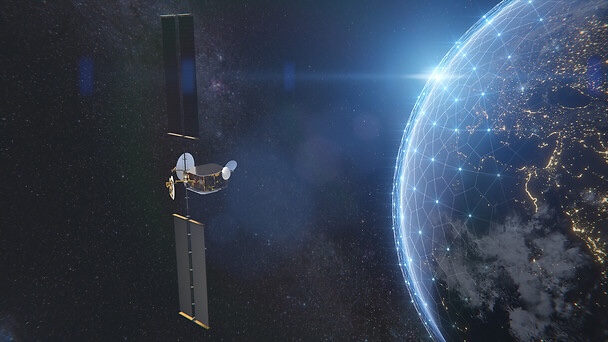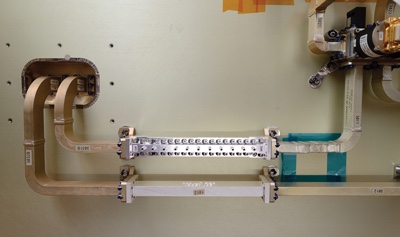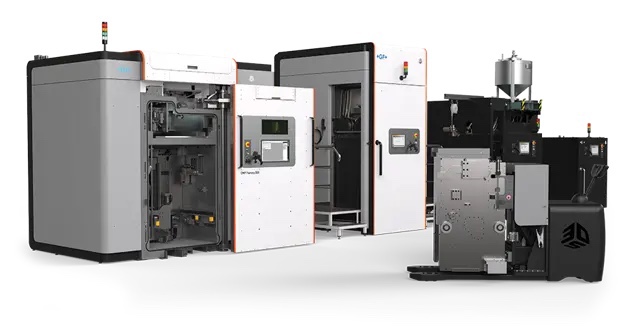3D Systems (NYSE: DDD) is announcing that it has received a multi-year contract from Airbus’ Defense and Space division, to develop components for antennas on Airbus satellites. The additive manufacturing (AM) stalwart has previously collaborated with the Dutch aerospace giant on two other projects, both involving the first radio frequency (RF) products created using laser powder bed fusion (LBPF).
Specifically, the antennas will be used on Airbus’ much-anticipated OneSat satellites, which are set for their first delivery in 2023. Airbus started taking orders for the OneSat, developed under a contract awarded by the European Space Agency (ESA) in 2019. While a 2023 delivery date may make it sound like Airbus has had a ton of lead time, it’s actually a relatively abrupt deadline for developing a satellite system.

Particularly so, considering the fact that the OneSat will be fully reconfigurable, based on a previous Airbus’ project — the Eutelstat Quantum — that was launched last year. Reconfigurable satellites are able to have certain of their key mission parameters changed while still in orbit. They’re seen as the future of the industry, and Airbus is taking the early lead in their production, assuming its deadlines are met. This highlights the logic behind use of AM in the space sector, where many different smaller projects must be sequenced together, right on time, for the larger project to meet its deadline years in the future.

The Vice President of 3D Systems’ aerospace and defense division, Dr. Michael Shepard, said in a press release, “As with our earliest work with Airbus on the first additively manufactured RF filter, we have the opportunity to bring another ‘first’ to the industry that is changing telecommunications. …We’re proud that 3D Systems’ technology can help lay the foundation for Airbus to build a strong supply chain for serial production of passive RF hardware.” Stephen Phipps, Airbus’ OneSat antenna program manager, added, “OneSat is a truly disruptive product, and we wanted our design and manufacturing process to possess that same level of innovation. Our company has a strong partnership with 3D Systems and has relied on its team of application engineers to help us bring our most advanced designs to life.”
The OneSat model utilizes two large antenna arrays — one for transmitting and the other for receiving — which is another factor making AM, and by extension, 3D Systems, so crucial to the project. The company will print the antenna components on its end-to-end, DMP Factory 500 Solution, managed by 3D Systems’ 3DXpert software. This will allow Airbus access to smaller, lighter, and less expensive parts to build its antennas, in addition to helping the company meet its deadline.

There are of course many sectors in which AM has been playing an increasing role in recent years, but it has a real chance to dominate the space industry relatively early. A couple of the reasons for this were mentioned above: faster time to market, and lighter, cheaper parts. Another reason, more specific to the commercial space sector, is that it’s hitting its stride at the same time as AM.
This is a good example of why many of the best opportunities for 3D-printing companies to thrive lie in crossover with other industry 4.0 sectors. Aside from the common vision shared by niche, outside-the-box markets, there’s the simple fact that investments are flowing into both sectors simultaneously. Even if the dollar amount isn’t as big, the proportion of AM’s use to the overall size of the space sector makes space the most reliable model so far for what incorporating AM as a routine part of doing business could look like, in general. And given this as an indicator, the AM sector won’t stop growing any time soon: as we see here and in countless other examples, whole generations of parts for space launches have already fully integrated AM into the production process.
Subscribe to Our Email Newsletter
Stay up-to-date on all the latest news from the 3D printing industry and receive information and offers from third party vendors.
You May Also Like
3D Printing Webinar and Event Roundup: April 28, 2024
In this week’s 3D Printing Webinar and Event Roundup, the Ceramics Expo is taking place in Michigan, Stratasys continues its advanced training courses, and SPE is holding a Polymer Characterization...
3DPOD Episode 196: Bioprinting and Biofabrication with Dietmar Hutmacher, Queensland University of Technology
Dietmar Hutmacher is a Professor and Chair in Regenerative Medicine at the Faculty of Engineering, School of Mechanical, Medical, and Process Engineering at Queensland University of Technology. He possesses extensive...
3DPOD Episode 195: 3D Printing Wood, Coffee, and Seaweed with Andy Jeffery, Marvel Labs
Andy Jeffery is a long-time 3D printing veteran who has repeatedly introduced binder jetting technologies to new areas. Starting as one of the earliest adopters of this technology for filters,...
3DPOD Episode 194: Product Design and the Additive Journey with PADT Hardware Director David Dietrich
David Dietrich‘s journey in 3D printing spans from materials engineering roles at Boeing and ORNL to his position as an engineering fellow at Honeywell, showcasing his extensive experience in metals...






























